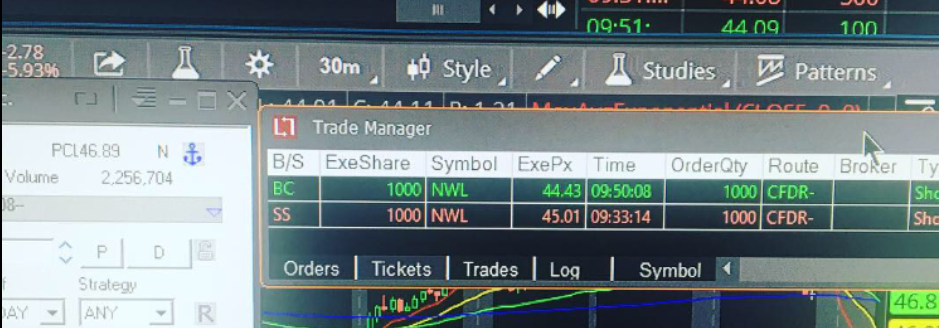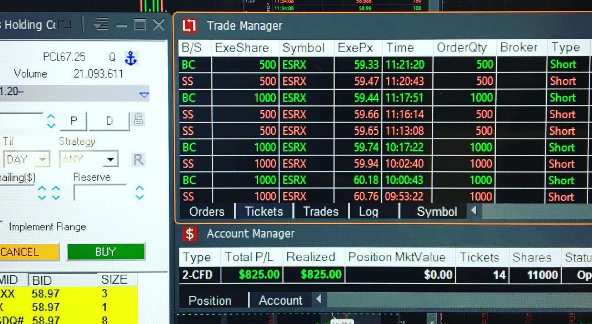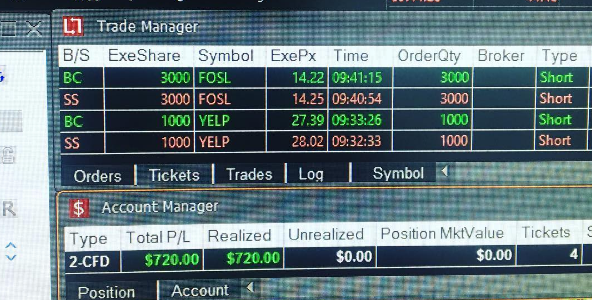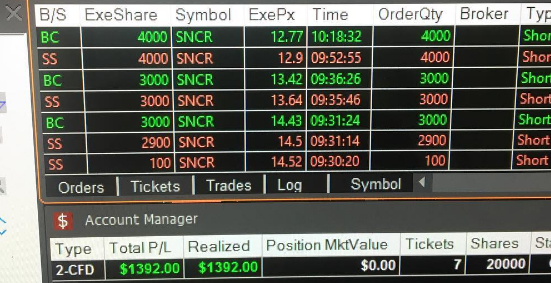A higher low and a lower high are reversal patterns. You tend to see them most often in stocks that either have a strong uptrend or a strong downtrend.
A Higher Low
We look for this setup in a stock that has been trending down
Whether we are short the stock or flat and looking to get long a higher low will be a good indicator that it is time to buy
Ideally, you want the higher low to be tested before you buy stock
This is a classic setup—It leads to large upmoves
Don’t make it more complicated than it needs to be
If you have identified a buyer at the low and the bid steps up higher and will not drop then you get long the stock
Normal risk/reward rules apply
If the stock has sold off 2 points and you believe that there is the potential for at least a 50 cent upmove then you are willing to risk up to 10 cents
If the higher low is 10 cents from the low then you can bid above the higher low and still have a good risk/reward trade
A Little Trickier
1) One Leg Up
2) Shallow Pullback
3) Second Leg Up
4) Then down move below the higher low
Do you hit the stock when it trades below the higher low? If you hit the stock where do you buy it back?
The answer is
1) It depends on how close to the low you are
2) It depends on how much of an upmove you are expecting
a. Which is based on how far down the stock has moved
b. And how much volume was done at the low
What if in the diagram above?
1) 30K shares traded at the low
2) 10K shares traded at the higher low
3) the higher low is five cents above low
The higher low won’t always get tested
If the higher low isn’t tested you can still buy—but you have less information about the buying interest in the stock
Easy Example
1) Low Established
2) Pulls back to a higher low
3) Second up leg takes out high of 1st up leg
A Little Trickier
1) One Leg Up
2) Shallow Pullback
3) Second Leg Up
4) Then down move below the higher low
Do you hit the stock when it trades below the higher low? If you hit the stock where do you buy it back?
The answer is
1) It depends on how close to the low you are
2) It depends on how much of an upmove you are expecting
a. Which is based on how far down the stock has moved
b. And how much volume was done at the low
What if in the diagram above?
1) 30K shares traded at the low
2) 10K shares traded at the higher low
3) the higher low is five cents above low
4) the stock has dropped 1 point on approximately 50K shares
Conclusion: Almost as much volume has been done between the low and the higher low as the entire downmove.
Which means what? The stock has moved to a price where there is significantly higher buying interest than there was the entire way down. So I’m gonna give the stock a chance to go up. I want to see the low taken out before I hit my stock. Ideally, I’d like to see a buyer/buyers hold the bid higher but I’m aware that a really smart buyer will drop the bid and see if he can get more stock at the low.
Lower High
A Lower High is a good indicator that a stock that has been trending up may be reversing
You can be certain a lower high is established when there is a lot of printing on the offer but the stock fails to lift
Best Case Scenario: You see a lower high held by a seller. Then there is a second lower high held. Stock is clearly trending down at this point.
When am I looking for a lower high?
1. If I notice a large seller on the offer that leads to a downmove
2. If a stock has been trending up but the upmoves are becoming shallower
3. If the upmoves have become completely out of control and I think the stock has enormous downside potential
Once I have identified a lower high I will get short
What if the lower high lifts? Depends on your risk versus reward
If you were looking to make 50 cents and the lower high is within 10 cents of the previous high you may not cover and in fact may short more if the previous high holds
i.e. Seller at $30. Seller at $29.90. The $29.90 seller lifts but the stock can’t trade above $30. Then you add to your position. Your confidence increases once the stock trades below $29.90
What A Reversal May Look Like
Stock is moving to a new high after each pullback. The stock has a pullback but the next up move fails to make a new high—Good chance stock is reversing
If a stock has one up move then after a pullback fails to make a new high it isn’t necessarily reversing.
Look at these two charts:





